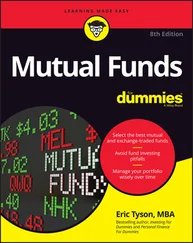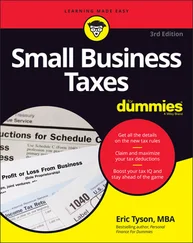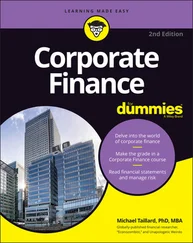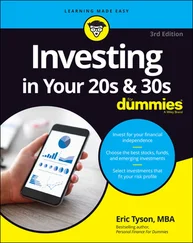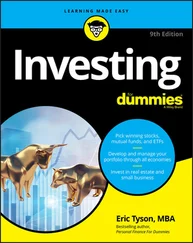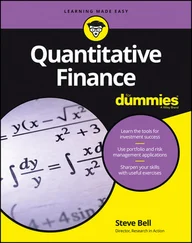1 ...7 8 9 11 12 13 ...18 Now, compare that situation to one where you reduce your spending so you can save $1,000 per year every year from your employment earnings. In both cases, assume that you put the money in a savings account and earn 3 percent annually (which has actually been about the long-term average over the generations). Historically, such a return is achievable from bonds. Table 2-1shows an example.
TABLE 2-1Nest Egg Growth
| Amount Saved |
Nest Egg after 40 Years |
| One-time $1,000 saved |
$3,260 |
| $1,000 saved annually |
$75,400 |
That’s quite a stunning difference, huh? And that’s just putting away the small amount of $1,000 annually and earning a modest 3 percent per year (and you can do better than that as I highlight in the next section). If you can put away $5,000 or $10,000 annually, then simply multiply the figures by 5 or 10.
The rewards of earning a (slightly) higher annual return on your investment
When you save money, you want to try and get higher returns. Bonds, stocks, and other investment vehicles (check out Chapter 10) typically produce much better long-term average returns than a savings account or a certificate of deposit (CD), which usually offers a measly 3 percent annual return over the long term (or much less in recent years). The trade-off with the stocks, bonds, and such is that you must be able to withstand shorter-term declines in those investments’ values.
If you put together a diversified portfolio of mostly stocks and a lesser number of bonds, for example, you should be able to earn about 8 percent per year, on average, over the long term. You won’t, of course, earn that amount every year — some years it will be less and some years it will be more. The following table shows how much you’d have after 40 years if you got a 3 percent annual return versus an 8 percent annual return.
| Investment |
3% Annual Return over 40 Years |
8% Annual Return over 40 Years |
| One-time $1,000 saved |
$3,260 |
$21,720 |
| $1,000 saved annually |
$75,400 |
$259,060 |
When you combine regular saving with more-aggressive yet sensible investing, you end up with lots more money.
Saving $1,000 yearly and getting just an average 8 percent annual return results in a nest egg of $259,060 in 40 years compared to ending up with just $3,260 if you invest $1,000 one time at a 3 percent return over the same time period. And remember, if you can save more — such as $5,000 or $10,000 annually — you can multiply these numbers by 5 or 10.
With historic annual inflation running at about 3 percent, you’re basically treading water if you’re only earning a 3 percent investment return. In other words, your investments may be worth more, but the cost of other things will have increased as well, so the overall purchasing power of your money won’t have increased. As I discuss in Chapter 10, the goal of long-term investors is to grow the purchasing power of their portfolio, and that’s where investments (such as stocks and bonds) with expected higher returns play a part.
Budgeting and Boosting Your Savings
When most people hear the word budgeting, they think unpleasant thoughts, like those associated with dieting, and rightfully so. Who wants to count calories or dollars and pennies? But budgeting — planning your future spending — can help you move from knowing how much you spend on various things to reducing your spending.
The following process breaks down budgeting in simple steps:
1 Analyze how and where you’re currently spending. Chapter 5explains how to conduct your spending analysis.
2 Calculate how much more you want to save each month.Everyone has different goals. This book can help you develop yours and figure how much you should be saving to accomplish them.
3 Determine where to make cuts in your spending.Where you decide to make reductions is a personal decision. While many people need to save more (and spend less) to accomplish their goals, it’s possible you may not need to reduce your spending. In Chapter 5, I provide plenty of ideas for how and where to make reductions if you’re among the many who want to save a greater portion of your current earnings.
Suppose you’re currently not saving any of your monthly income and you want to save 10 percent for retirement. If you can save and invest through a tax-sheltered retirement account — such as a 401(k), 403(b), SEP-IRA, and so forth (see the section “ Valuing retirement accounts and financial independence” later in this chapter) — then you don’t actually need to cut your spending by 10 percent to reach a savings goal of 10 percent of your gross income.
When you contribute money to a tax-deductible retirement account, you generally reduce your federal and state income taxes. If you’re a moderate-income earner paying approximately 30 percent in federal and state taxes on your marginal income (see Chapter 6), you actually need to reduce your spending by only 7 percent to save 10 percent. The other 3 percent of the savings comes from the lowering of your taxes. (The higher your tax bracket, the less you need to cut your spending to reach a particular savings goal.)
So to boost your savings rate to 10 percent, you simply need to go through your current spending, category by category, until you come up with enough proposed cuts to reduce your overall spending by 7 percent. Make your cuts in areas that are the least painful and in areas where you’re getting the least value from your current level of spending.
 If you don’t have access to a tax-deductible retirement account or you’re saving for other goals in nonretirement accounts, budgeting still involves the same process of assessment and making reductions in various spending categories.
If you don’t have access to a tax-deductible retirement account or you’re saving for other goals in nonretirement accounts, budgeting still involves the same process of assessment and making reductions in various spending categories.
CONSIDERING ANOTHER BUDGETING METHOD
Another method of budgeting involves starting completely from scratch rather than examining your current expenses and making cuts from that starting point. Ask yourself how much you’d like to spend on different areas (such as rent, meals out, and so on). This is called zero-based budgeting.
The advantage of this approach is that it doesn’t allow your current spending levels to constrain your thinking. Just because your current rent is $1,500 per month doesn’t mean that it needs to remain there. When your current lease expires, you could change your housing arrangements and perhaps find a nice rental you can share with others. I did this in my early years after college, and doing so enabled me to keep my rent low and save more money.
You’ll likely be amazed at the discrepancies between what you think you should be spending and what you actually are spending in certain categories. Take going out to eat, to bars, and to concerts, for example. You may think that spending $150 per month is reasonable and then discover that you’ve been averaging $250 per month in this category. Thus, you’d need to slash your spending here by 40 percent to get to your target.
Setting and Prioritizing Your Savings Goals
You probably have some financial goals. If you don’t, you should begin thinking about some personal and financial goals you want to reach. Because everyone is unique, you surely have different goals than your parents, friends, neighbors, and siblings. Although goals may differ from person to person, accomplishing personal and financial goals almost always requires saving money. In this section, I discuss common financial goals and how to work toward them.
Читать дальше

 If you don’t have access to a tax-deductible retirement account or you’re saving for other goals in nonretirement accounts, budgeting still involves the same process of assessment and making reductions in various spending categories.
If you don’t have access to a tax-deductible retirement account or you’re saving for other goals in nonretirement accounts, budgeting still involves the same process of assessment and making reductions in various spending categories.